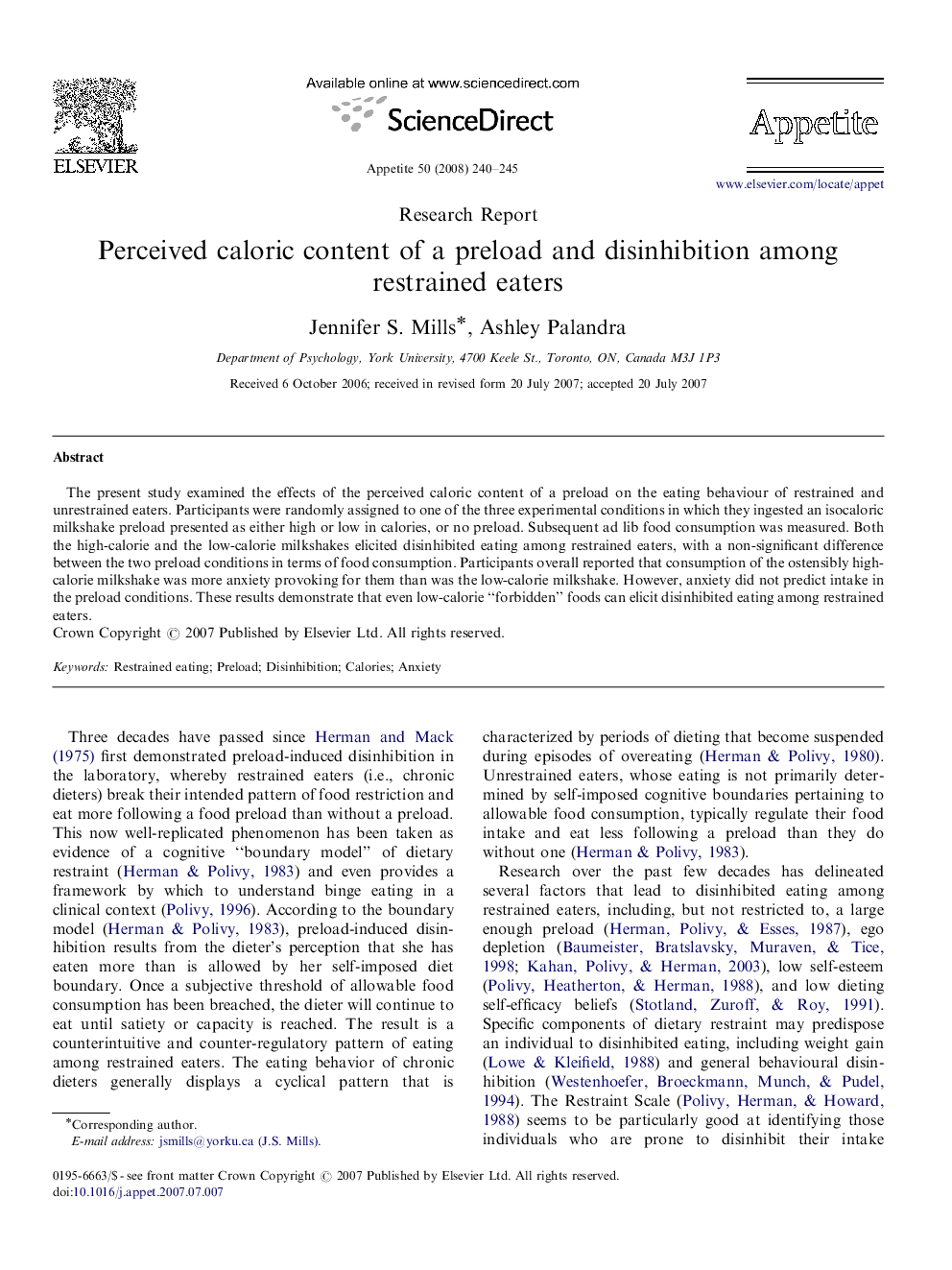| Article ID | Journal | Published Year | Pages | File Type |
|---|---|---|---|---|
| 941421 | Appetite | 2008 | 6 Pages |
The present study examined the effects of the perceived caloric content of a preload on the eating behaviour of restrained and unrestrained eaters. Participants were randomly assigned to one of the three experimental conditions in which they ingested an isocaloric milkshake preload presented as either high or low in calories, or no preload. Subsequent ad lib food consumption was measured. Both the high-calorie and the low-calorie milkshakes elicited disinhibited eating among restrained eaters, with a non-significant difference between the two preload conditions in terms of food consumption. Participants overall reported that consumption of the ostensibly high-calorie milkshake was more anxiety provoking for them than was the low-calorie milkshake. However, anxiety did not predict intake in the preload conditions. These results demonstrate that even low-calorie “forbidden” foods can elicit disinhibited eating among restrained eaters.
